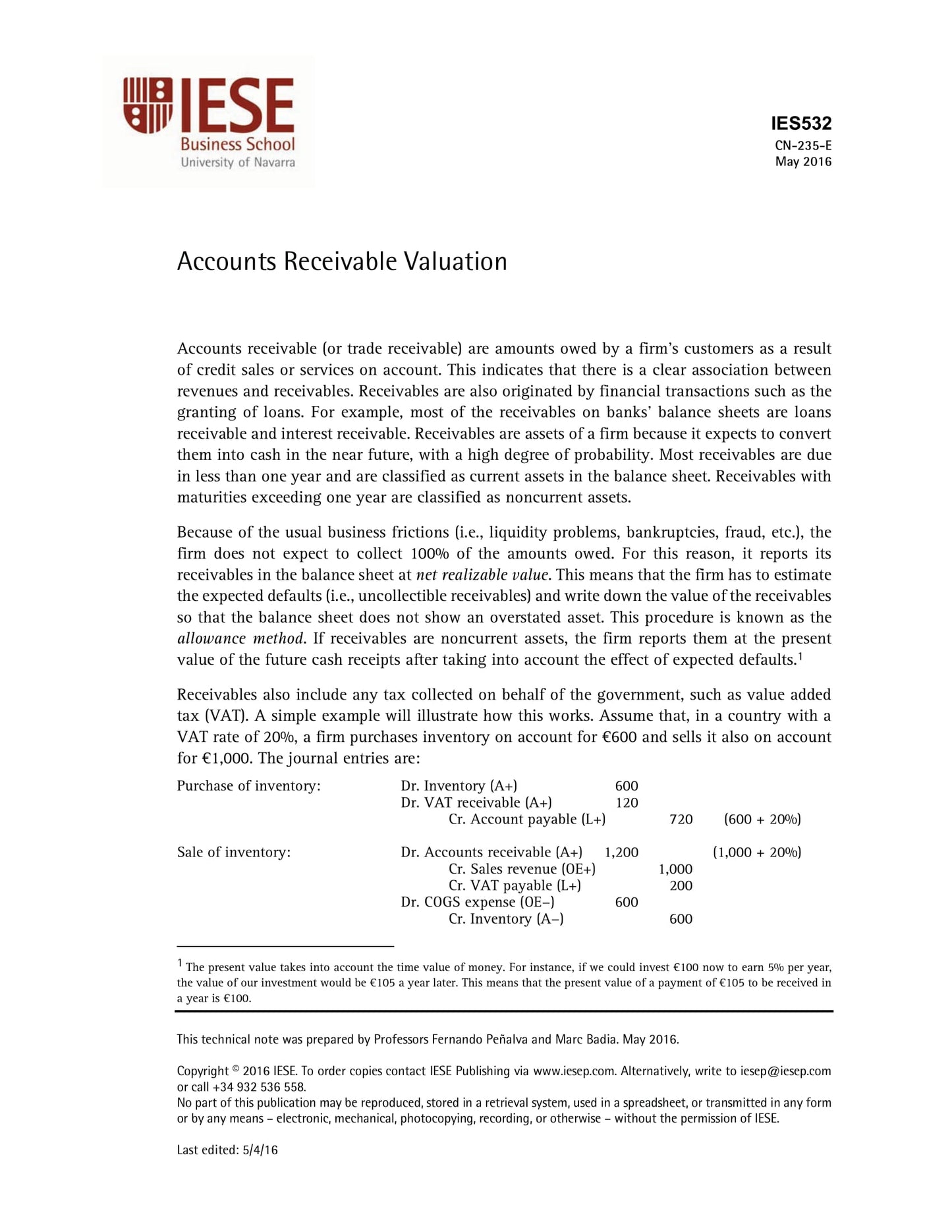Accounts Receivable Valuation
受取状況を読み込めませんでした
Accounts receivable (or trade receivable) are amounts owed by a firm's customers as a result of credit sales or services on account. Receivables are also originated by financial transactions such as the granting of loans. For example, most of the receivables on banks' balance sheets are loans receivable and interest receivable. Receivables are assets of a firm because it expects to convert them into cash in the near future, with a high degree of probability. Most receivables are due in less than one year and are classified as current assets in the balance sheet. Receivables with maturities exceeding one year are classified as noncurrent assets. This note explains how to account for receivables. The reader will learn the allowance method for uncollectible receivables and the way to record value added tax. The note covers concepts such as bad debt expenses, allowance for bad debt, write-offs, recoveries and the aging analysis for the estimation of bad debts.
【書誌情報】
ページ数:6ページ
サイズ:A4
商品番号:HBSP-IES532
発行日:2016/5/2
登録日:2016/8/8


